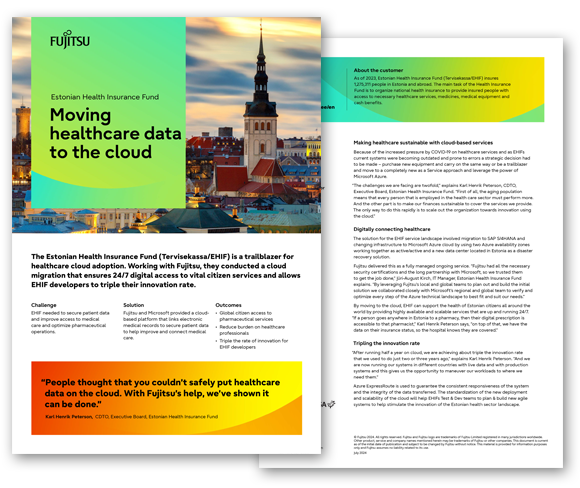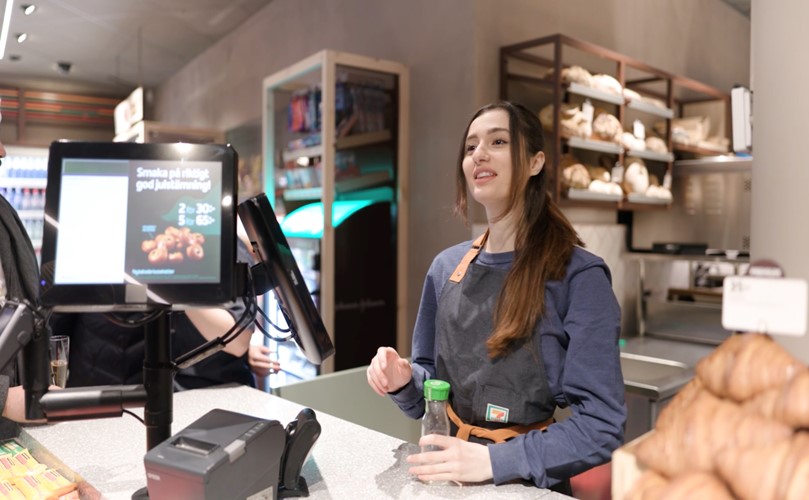Skogforsk
Using 5G for sustainable forestry

Skogforsk is transforming the way Sweden manages its forests. The Forestry Research Institute is leveraging Fujitsu’s expertise to enhance operator safety and increase efficiency by using autonomous vehicles connected via a private 5G network to enable sustainable forestry for the next 100 years.
Challenges
The presence of deep woodland and high mountains make establishing real-time connections with machines in the forests of Sweden extremely challenging.
Solutions
Fujitsu created a high capacity area using a local 5G network, ensuring reliable data communications and low latency, and enabling the promise of autonomous vehicles at Skogforsk’s lab outside of Uppsala.
Outcomes
-
Remote-controlled autonomous forest machines of fer efficiency
gains
- Machine operators enjoy a safer and more advanced working environment
"The partnership has worked well. We call Fujitsu a digital giant."
Charlotte Bengtsson, CEO, Skogforsk
1 operator can interact with several machines at the same time
operator can interact with several machines at the same time
- Industry: Manufacturing
- Location: Sweden
- People: 150+
- Customer's website

About the customer
Skogforsk (the Forestry Research Institute of Sweden) is the central research body for the Swedish forestry sector. Its mission is to develop and communicate knowledge, services and products that promote sustainable development in forestry for the benefit of society.
“With large areas of forest, a relatively small population, and a long tradition of sustainable forest production, Sweden is ideally placed to lead the way to the circular economy,” explains Charlotte Bengtsson CEO, Skogforsk. However, forestry is a hazardous and physically demanding profession, which has prompted the exploration of remote operated machinery to help mitigate health risks, reduce costs, and attract more individuals to the profession.
“We understand automation and digitalisation will be key enablers of our sustainability initiatives and we wanted to see if 5G could help us make remote controlled forest machines a reality,” explains Maria Nordström, Process Leader, Digitalization, Skogforsk. But achieving the necessary level of autonomy in remote areas posed significant challenges. The initiative required extensive processing of remote sensing data and a stable, real-time connection, which conventional WiFi couldn’t provide. For Skogforsk’s solution to work, a combination of high-resolution video, high speed and low latency was needed.
5G expertise overcomes connectivity challenges
Skogforsk wanted a partner from outside the forestry sector to help integrate new technologies like 5G and ensure the system worked. Fujitsu was chosen to create a high-capacity area using a local 5G network, ensuring reliable data communications and low latency, while giving the driver full control wherever they were. Installation and configuration of the system were done on site together with Skogforsk and an ecosystem of partners, including Telenor and Ericsson as the spectrum owners, with Fujitsu acting as the overall systems integrator.
“When we work together with large tech companies, it’s because they bring knowledge about specific technologies that we don’t have at Skogforsk. They bring us knowledge from other markets and sectors that we can make use of in the forestry sector. Fujitsu is a great example of that. We benefit from their expertise, and it creates opportunities for small research institutes like us to make giant leaps forward,” Maria Nordström adds.
Wireless connectivity transforms working practices
Skogforsk wanted a partner from outside the forestry sector to help integrate new technologies like 5G and ensure the system worked. Fujitsu was chosen to create a high-capacity area using a local 5G network, ensuring reliable data communications and low latency, while giving the driver full control wherever they were. Installation and configuration of the system were done on site together with Skogforsk and an ecosystem of partners, including Telenor and Ericsson as the spectrum owners, with Fujitsu acting as the overall systems integrator.
“When we work together with large tech companies, it’s because they bring knowledge about specific technologies that we don’t have at Skogforsk. They bring us knowledge from other markets and sectors that we can make use of in the forestry sector. Fujitsu is a great example of that. We benefit from their expertise, and it creates opportunities for small research institutes like us to make giant leaps forward,” Maria Nordström adds.
Related Customer stories




